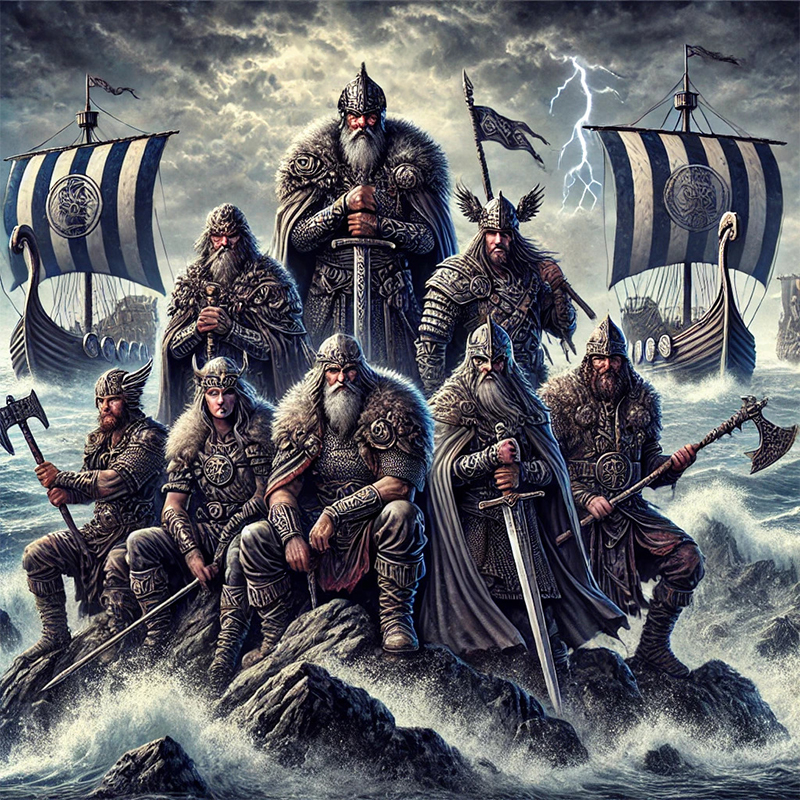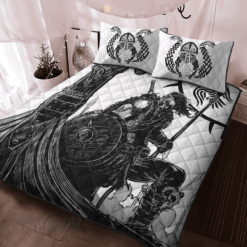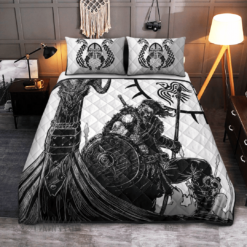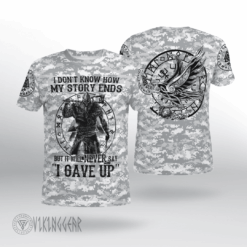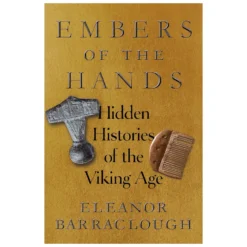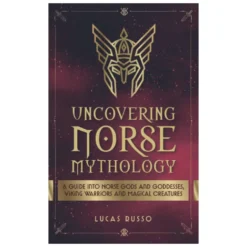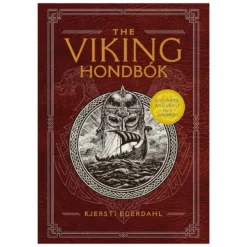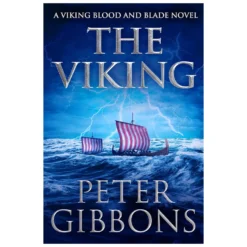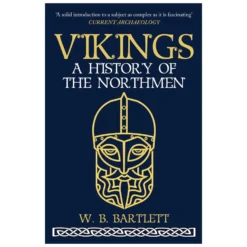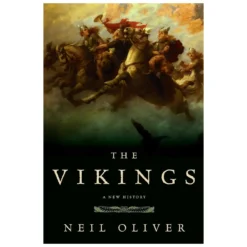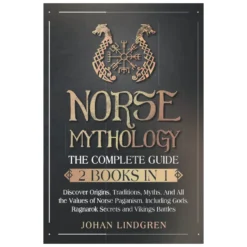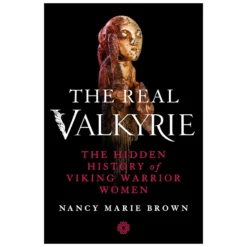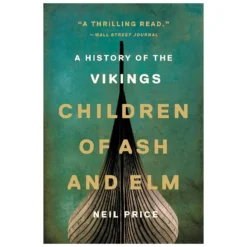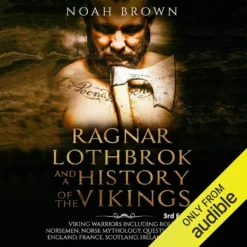Viking Blog
Viking Kings: 7 Legendary Sea Conquerors
The Viking Age (circa 793–1060 AD) was a time of change in Europe. The expansion of Scandinavian warriors, explorers, and traders known as Vikings marked it. Powerful Viking kings led this era. Their ambition and seafaring skills shaped history. Let’s delve deeper into the lives and legacies of seven of these legendary rulers.
1. Ragnar Lothbrok
Ragnar Lothbrok is a captivating figure. His life is a mix of history and myth. People debate his existence. But people believe he is a Danish king and a fearsome raider. He terrorized the coasts of Francia and England in the 9th century. One tale says he used cunning to breach the walls of Paris in 845 AD. He disguised his warriors as monks seeking refuge. Ragnar’s lineage traces back to the Norse god Odin, enhancing his legendary status. His sons, Ivar the Boneless and Bjorn Ironside, became famed Viking leaders. This further solidified Ragnar’s place in Viking sagas.

2. Harald Fairhair (Harald Hårfagre)
Harald Fairhair, the unifier of Norway, was a king of great resolve and vision. According to legend, his quest for power began with a romantic pursuit. He vowed to win the hand of Gyda, a proud princess, who refused him until he ruled all Norway. Harald’s ambition drove him to fight many battles. He won them all, culminating in the decisive Battle of Hafrsfjord in 872 AD. This victory established his authority. It paved the way for a united Norway. Yet, Harald’s strong rule caused discontent and emigration. Many Norsemen sought new lands in Iceland and the Faroe Islands.
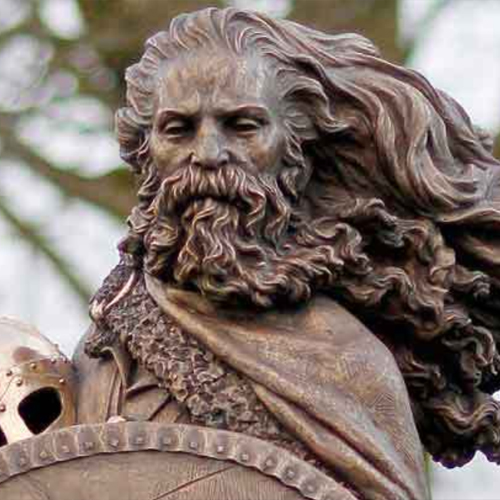
3. Ivar the Boneless
Ivar the Boneless, a son of Ragnar Lothbrok, was a Viking leader. People knew him for his strategic brilliance and ruthlessness. His epithet “Boneless” has unknown origins. Theories range from a medical condition to a metaphor for his cunning and agility. Ivar played a key role in the invasion of England by the Great Heathen Army in the 9th century. Historians credit him with masterminding the capture of York in 866 AD. He then conquered East Anglia. He reportedly executed King Edmund, a saint.
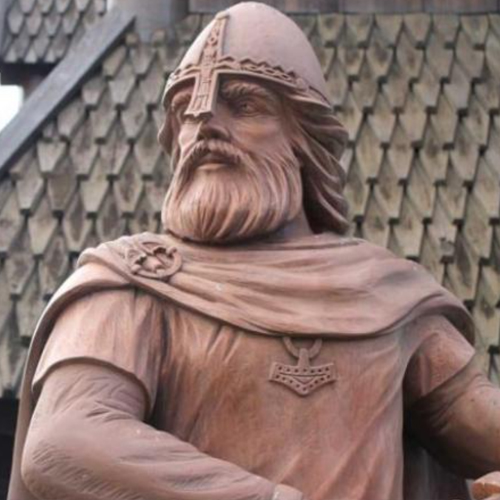
4. Cnut the Great (Canute)
Cnut the Great ruled a vast North Sea Empire in the 11th century. It included England, Denmark, and Norway. He was a powerful and influential leader. His reign brought stability and prosperity. He balanced his Viking heritage with his Anglo-Saxon subjects’ traditions. Cnut’s reforms and legal code strengthened his realm. He also fostered trade and cultural exchange. A devout Christian, he took a pilgrimage to Rome. It showed his piety and connection to European Christendom. Cnut’s push for peace and good rule earned him the title “the Great”.
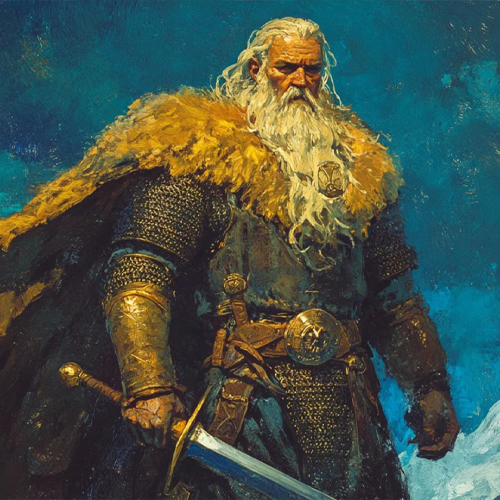
5. Rollo of Normandy
Rollo, a Viking chieftain of disputed origins, founded Normandy in northern France. Using military might and smart negotiation, he got land from the French king, Charles the Simple, in 911 AD. In return, Rollo pledged loyalty to the king. He would defend the region from other Viking raiders. He adopted Christianity and embraced Frankish customs. This created a unique Norman culture that mixed Scandinavian and French influences. Rollo’s descendants, especially William the Conqueror, conquered England in 1066. This changed European history forever.
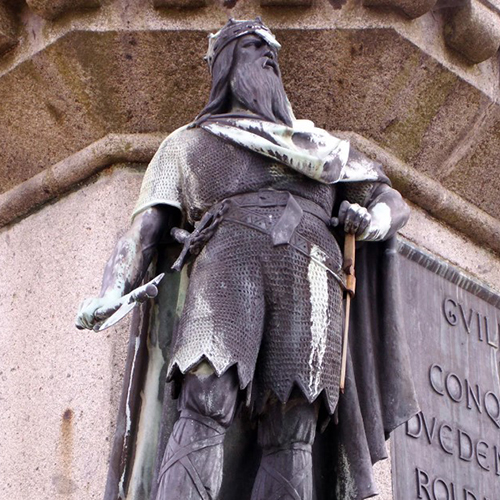
6. Olaf Tryggvason
Olaf Tryggvason was a charismatic, zealous king. He was key to Norway’s Christianization. Adventure and religious fervor marked his life. After years as a Viking raider, he converted to Christianity in England. He then returned to Norway to spread the faith. Olaf’s methods were often forceful. He faced resistance from those who clung to the old Norse beliefs. His controversial tactics established Christianity as Norway’s dominant religion. They left a lasting legacy on the country’s religious and cultural identity.
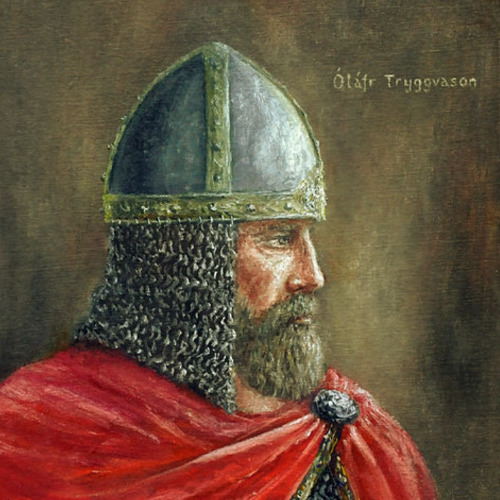
7. Harald Hardrada (Harald Sigurdsson)
Harald Hardrada, a warrior king with a thirst for conquest, embodied the spirit of the Viking Age. His life was a tapestry of adventure and ambition. It took him from the battlefields of Scandinavia to the court of the Byzantine Emperor in Constantinople. There, he served as a commander in the Varangian Guard. He amassed wealth and experience before returning to Norway to claim the throne. In 1066, Harald launched a bold invasion of England, seeking to expand his power. His campaign ended in defeat and death at the Battle of Stamford Bridge. This battle marked the end of the Viking Age.
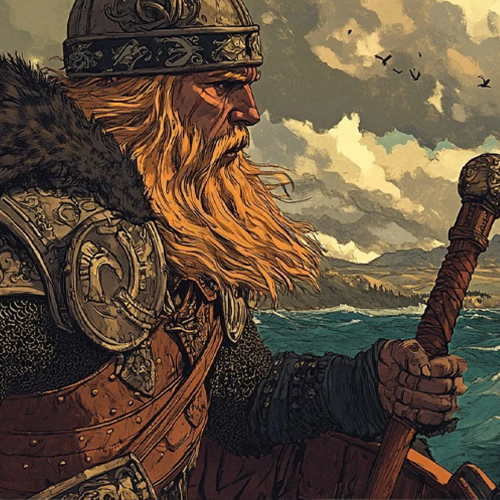
The Legacy of Viking Kings
The Viking kings were more than conquerors and raiders. They were leaders, explorers, and cultural innovators. They influenced Europe and beyond, shaping its politics and culture. They built new kingdoms, fostered trade, and shared cultures. They left a legacy of exploration, innovation, and resilience. These seven Viking kings’ stories still captivate us. They recall a time of bold exploration, fierce independence, and a spirit of adventure.

